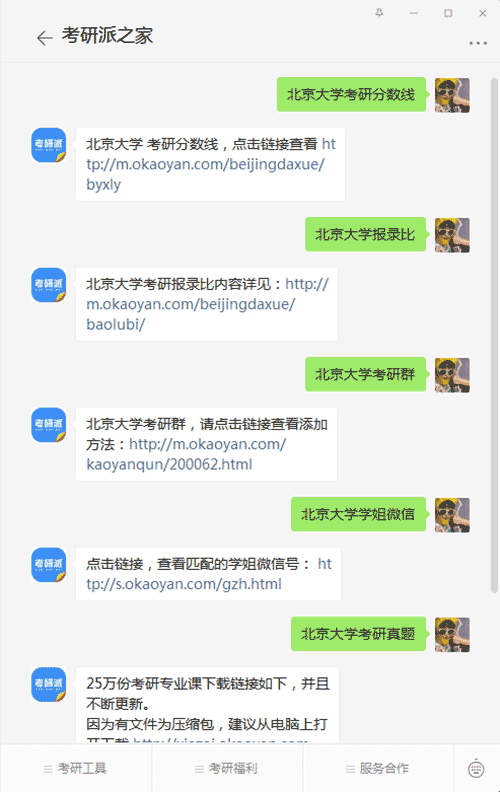北京大学建筑与景观设计学院研究生招生是一个不错的学院,深受考研人的追捧,本校每年会有数千名研究生招生的名额,研究生报考录取比在3:1左右,难度中等,部分热门的研究生专业研究生报考录取比会更高一点,
建筑与景观设计学院是学校里比较好的一个院系,请各位准备报考北京大学建筑与景观设计学院研究生招生的同学注意,该院系有以上多个专业在招生研究生,欢迎各位同学报考北京大学建筑与景观设计学院研究生招生。
强烈建议各位准备考北京大学建筑与景观设计学院研究生招生的同学准备一些基本的历年考研真题、研究生学姐学长的笔记、考研经验等等(考研派有考研经验频道,也有考研派微信公众号、考研派APP等产品平台,里面有不少研究生会免费解答你的考研问题,助你考研一臂之力)

附件【
建筑与景观设计学院2021年硕士招生拟录取公示名单.pdf】
北京大学建筑与景观设计学院地理设计介绍
北京大学地理设计(GeoDesign)实验室是由北京大学建筑与景观设计学院与美国环境系统研究所(Envronmental Systems Research Institute, Inc. 简称ESRI)于2011年联合成立的研发工作室。实验室至成立以来一直致力于试图打破地理学、城市规划、园林学、建筑学与土木工程学等的界限,借助数字化的计算机技术(GIS、RS、GPS、BIM)和交流技术来支撑信息化设计,从技术上对人居环境规划中所面临的大范围的、错综复杂的、或长时间维度的问题提出解决办法。实验室工作主要包括:为研究院其他研究所提供技术支撑;定期与国际相关领域的机构、学者进行多种方式的交流活动(如,北京大学承办地理设计国际会议(2013,北京));地理信息系统课程辅助教学;技术研发与创新。
北京大学建筑与景观设计学院土地设计研究所介绍
组织申请和承担国家自然基金委、国家部委及地方省市土地生态方面的研究课题;开展国内外土地生态规划与设计的理论和规划实践研究和总结。主要研究方向:土地生态设计,城市生态规划,土地利用规划,生态基础设施规划,生态用地研究等。近年来承担课题包括:环保公益性行业科研专项“我国国土生态安全格局构建关键技术与保护战略研究”;“北京市浅山区土地利用战略规划”;北京市土地利用总体规划修编专题之“北京市生态安全格局战略研究”等。
北京大学建筑与景观设计学院 生态水系与绿地系统研究所介绍
生态水系与绿地系统研究室主要从事可持续的水生态系统和绿地生态系统规划、河流廊道生态修复、生态景观设施水质水量调控机理研究等。近年来主要从事的相关项目包括国家自然科学基金“全球气候变化背景下中国城市水适应能力建设的景观途径”;水体污染控制与治理重大专项“重庆两江新区城市水系统构建技术研究”、“生态景观设施设计与径流减控技术研究”;其它部委研究课题、地方横向课题、规划等。
中德城镇化与地方性研究实验室(Sino-German Joint Laboratory on Urbanization and Locality Research, UAL),由中国北京大学建筑与景观设计学院、德国莱布尼兹汉诺威大学建筑与景观学院共同设立。实验室的研究基于学科交叉展开,成员来自城市规划、景观学、建筑学、生态学、旅游等多个专业。
城镇化是人类经济社会发展的客观要求和必然产物,是一个国家或地区经济社会发展进步的重要反映和标志,也是当今世界最引人注目的社会、经济和地理现象之一。中国经过30多年的传统城镇化进程,城镇化率已经超过50%,但也导致城镇的形态和景观的破碎化、孤岛化等现象,城镇文化内涵和地域特色逐渐消失。
UAL实验室认为,目前的城镇化过程中,城市同质性、“千城一面”的问题愈演愈烈,因此必须强调保持并发展地方性,即延续地方固有的自然和文化要素所形成的地方特色。地方性是一个动态的概念,包含细致研究一个区域的遗产状况,并对其进行保护和发展。在UAL实验室第一阶段,即2016-2018年的研究中,正对中国大运河和城市运河沿河城镇的景观转变进行考察,并以此为实例,制定规划设计原则,从而在城镇化进程中实现地方特色的保护和发展。在中国、德国及世界各地面向未来的城市化策略中,地方性和地方认同的建立是实现城市可持续发展的重要因素。UAL实验室的研究目标和工作重点正与此相一致。
Sino-German Joint Laboratory on Urbanization and Locality Research (UAL) is established jointly by the College of Architecture and Landscape Architecture, Peking University, China and the Faculty of Architecture and Landscape Sciences, Leibniz University Hanover, Germany. UAL has an interdisciplinary perspective and includes experts from Urban Planning, Landscape Architecture, Architecture, Ecology and Tourism.
Urbanization, an irreversible trend for economic and social development of mankind, can be seen as an important index of prosperity and social progress in the country and region. Besides, urbanization is a socio-economic and geographic phenomenon that receives the most intense and increasing concerns. After the past 30 years of rapid development, the urbanization rate in China has exceeded 50%. However, it also leads to fragmentation in urban morphology and landscape. Urban cultural and regional characteristics have gradually disappeared.
The Sino-German Joint Laboratory on Urbanization and Locality Research (UAL) addresses this problem of increasing uniformity and aims to maintain and develop locality, which means the specific character of a place with its inherent natural and cultural elements. Locality implies a careful study of an area´s heritage, it is about preservation and development, and it is a dynamic concept. In the first research phase of the UAL from 2016-2018, the transforming urban landscapes along the Grand Canal in China and German canals are studied and will serve as relevant examples to develop planning and design principles in order to achieve an urbanization which preserves and develops the local character. With these research aims, the UAL is in line with future-orientated urbanization strategies in China, Germany and all over the world, where locality and identity are seen as important factors to achieve sustainable urban development.
城市过程模拟与应用实验室(Laboratory of Urban Process Modeling and Applications,简称UPMA)由John Zacharias 博士于2012年在北京大学创办,针对当代城市发展和城市化的相关问题开展研究,同时为需要国际经验背景的高端项目提供智力支持。实验室立足科研发展的同时也十分重视人才培养和国际交流,四年当中已有1名博士和22名硕士取得学位,且一直与苏黎世联邦理工学院(ETH)、新加坡南洋理工大学(NTU)和香港大学(HKU)等保持科研合作。实验室当前的研究重点包括深圳市交通出行行为研究,天津城区的空间与交通方式演变,自行车在中国城市发展中的角色演变,以及香港地区公共空间和地下空间系统的研究。
Laboratory of Urban Process Modeling and Applications (UPMA) was founded by Dr. John Zacharias within Peking University in Beijing in 2012. Based on his super experienced background in urban development and transport related urbanization, the goals of UPMA are providing data-orientated scientific evidence for policy support and decision making, as well as cultivate the talents. In the past four years more than twenty students got master degree and one got doctoral degree from here. Active participating in international cooperation keeps UPMA well connected with high level universities in research fields, including Eidgenössische Technische Hochschule Zürich, Nanyang Technological University and The University of Hong Kong, etc. Our current work includes a major investigation of travel behavior in Shenzhen, a longitudinal study of the evolution of the space and transport in Tianjin, the evolving role of the bicycle in Chinese cities, and studies of public space and underground systems in Hong Kong.
生态城市联合实验室是哈佛大学设计研究生院和北京大学建筑与景观设计学院的合作项目。长期以来,两所大学师生之间保持着良好的交流合作关系,在此基础上,两校于2014年9月成立了该跨学科合作项目。
目前,全球面临多种生态挑战,如资源短缺、环境污染、气候变化。中国城市面临严峻挑战的同时,也面临难得的机遇。未来发展应减少环境破坏,减少视觉及其他形式的污染,尊重海洋生物、自然资源、地貌、植被, 采用持续发展技术,并使之与景观、当地生活方式及工业相结合。
生态城市联合实验室将考察中国具有不同地理、气候、文化与经济特征的城市,并建立城市一览表。最终目标是通过对比不同城市,更好地了解另类发展模式,为中国城市提供更具弹性的未来发展规划,解决废弃物、能源、空气污染、建筑设计等问题。另类未来发展规划将在研究成果中出版。该合作项目包含科研和教育两部分。
科研
科研项目将研究中国城市化过程中特有的环境、社会、法律和经济问题。研究员将以探索未来发展规划为导向,研究中国城镇景观建筑,城市生活,城市基础设施,绿色建筑及其可持续性。
科研将广泛咨询业界及公众意见,讨论以下与健康息息相关的话题:
1. 各级城市改造
2. 未来新城镇
3. 污染及城市健康,包括人口老龄化和城市化
4. 城市基础设施,公共空间
5. 生态设计,为绿色城市和景观收集并测试数据
科研包括三个,各阶段可同时开展:田野调查,方案设计,方案实施。
田野调查:
从2016年夏季开始,在两校教员带领下,核心研究团队将在中国进行广泛田野调查。绘制解析图和地图,以研究城市化进程中的环境、经济、地理及社会生态。
方案设计:
以本科研项目成果为依据,制定规划原则,完善设计方案。
方案实施:
规划原则和未来发展方案将成为未来项目蓝图。
教育
生态城市联合实验室是一个广阔的平台,促进城市化监督管理技能的发展,并使教职员工和学生得以在中国进行研究。教学部分包括多种形式,如专题研讨会,讲习班,科研奖学金,学生实习,系列讲座,研讨班,方案设计实践课等。除此之外,中国城市将两所大学教学和学术出版提供个案参考。
Outline
The Ecological Urbanism Collaboration EUC is a collaboration between the Harvard University Graduate School of Design and the Peking University College of Architecture and Landscape. The two universities, which have a history of cooperation and interaction among their faculty and students, established the trans-disciplinary collaborative program in September 2014.
The world is currently facing many ecological challenges relating to questions of scarcity of resources, pollution, climate change, and risk. Chinese cities face a particular set of challenges, but also distinct opportunities. Future development should minimize disruption to the environment, reduce visual and other forms of pollution, respect marine life, natural resources, topography, and vegetation, and incorporate sustainable technologies that are integrated with the landscape and with local lifestyles and industries.
The EUC is looking at cities throughout China located in different geographic, climatic, cultural, and economic regions in order to build up a catalogue of cities. Through a method of city comparison, the ultimate goal of the collaborative project is to achieve a better understanding of alternative modes of developing and planning a more resilient future for Chinese cities, including questions of waste, energy, air pollution, and building design. These alternative futures will be outlined in publications arising from the multi-year study. The collaborative project has two main components: Research and Education.
Research
The first component is a research program that studies the unique environmental, social, legal, and economic challenges of Chinese urbanization. Researchers investigate cities and towns, including landscape architecture and urbanism, urban infrastructures, and green buildings and sustainability, with a view toward producing scenarios that guide the future. Specific recommendations will consider the distinct ecologies (environmental, social and aesthetic) of specific cities.
The research, which will include extensive consultations with institutional partners and the public in Chinese cities, will address the following topics, with issues relating to health central to each of them:
1. Regeneration, focusing on cities at multiple scales
2. Future of new towns
3. Pollution and healthy cities, including research on aging and urbanization
4. Urban infrastructure and the future of public space
5. Designed ecologies, testing and gathering data for the designed green city and landscapes
The research has three main phases which may operate simultaneously: Fieldwork; Designing Scenarios; and Implementation.
Fieldwork:
Beginning in summer 2016, a core team of researchers led by faculty members from both universities will conduct extensive fieldwork in China. Analytic drawings and maps will be created to investigate the numerous environmental, economic, geographic and social ecologies of urbanization.
Designing Scenarios:
The design and development of scenarios, including design and planning principles will be based on the research undertaken.
Implementation:
The design and planning principles and future scenarios will be translated into prospective projects.
Education
The second component of the project concerns education. The EUC provides a forum to develop skill sets to oversee the stewardship of urbanization in the future. The EUC facilitates a platform for faculty, fellows, and students to teach or conduct research in a Chinese context. The pedagogical elements may include symposiums, workshops, research scholarships, student internships, lecture series, seminar courses, and design studios. In addition, Chinese cities will form the basis of case studies to be referenced in the teaching and publications of both universities.
研究人员
介绍
Mohsen Mostafavi
哈佛大学设计研究生院院长,设计专业讲座教授
俞孔坚
北京大学建筑与景观设计学院院长,长江学者特聘教授
Gareth Doherty
哈佛大学设计研究生院景观设计副教授,高级研究员
Hannes Zander
研究助理,领队
许立言
项目副总监,外事
Hayden White
研究助理
刘钿
生态城市联合实验室办公室主任
Stephen Ervin
哈佛大学设计研究生院计算机资源系副主任
Pat Roberts
哈佛大学设计研究生院执行院长
Charles Waldheim
哈佛大学设计研究生院风景园林系资深教授
联系方式
生态城市联合实验室
中国北京市海淀区颐和园路5号,红四楼
北京大学建筑与景观学院
电话: +86 139-1145-6012
Contact
Ecological Urbanism Collaboration
5 Summer Palace Road
Peking University, College of Architecture and Landscape
Red Building No. 4
Haidian District, Beijing, China
Tel. +86 139-1145-6012
北京大学建筑与景观设计学院联系方式
行政办公机构
综合办公室
主任:朱亮亮
成员:祁英 李文聪
联系电话:62751181,62751395
(公文公章,人事管理,学院宣传,会务组织,信息保密,家具设备,安全保卫,楼宇管理,员工福利)
学生事务办公室
主管:路露
联系电话:62759003
(研究生教务,在职研究生教务,学生工作)
财务办公室
成员:赖茜
联系电话:62751395
(财务办理、出纳)
外事科研
秘书:刘钿
联系电话:62763607
(外事工作、科研工作)
校友会秘书处
秘书长:路露
联系电话:62759003
基金会秘书处
秘书长:朱亮亮
联系电话:62751181
学院图书馆
主管:朱亮亮
馆员:祁英
联系电话:62763607
北大自诞生一刻起就与一个负重前行的民族之命运紧密联系在一起,强烈的忧患意识和社会责任感是北大发展的原动力,过去如此,未来依然如此。当今中国面临众多挑战,要求我们去探索应对的策略,包括:史无前例的城镇化,空前紧张的人地关系与资源环境危机,全球化与民族身份问题,传统价值观的重估与新伦理、新美学和新生活方式的开启。这是历史赋予北京大学的责任,正是出于这种担当,北京大学于2010年5月决策成立建筑与景观设计学院,并任命俞孔坚教授为首任院长。新的学院在景观规划与设计研究中心(1997年成立),景观设计学研究院(2003年成立)和建筑学中心(2000年成立)等三个机构基础上整合而成。目前有教职工15位,包括双聘院士1位,外籍QR专家1位,国家QR专家1位,教育部长江学者1位.至2015年,学院已经毕业的研究生400多名,博士20多名;目前在校硕士研究生总人数为277人,其中全日制风景园林硕士专业学位研究生29人,在职风景园林专业硕士研究生182人,地理学(景观设计学)硕士研究生66人。
学院以倡导和发展生态文明为宗旨,进行跨学科、跨尺度的人居环境规划设计的科研和教学,旨在培养新一代人设计学科的领军人才。多年来,学院广大师生在两大方面的探索,形成自己的特色:第一,探索生态文明理念下的多城乡规划设计的教学、科研与创新实践,在国土、区域和场地三个尺度上,建立跨尺度的城乡生态基础设施,并进行基于生态基础设施的国土、区域和城镇的规划设计;第二,探索基于生态文明理念和价值观的新美学、新设计,包括新型城镇化、新美学建筑、和新美学景观。
学院得益于任彦申、闵维方和朱善璐三位书记,和陈佳洱、许智宏、周其凤、王恩哥和林建华五位校长近20年来的热心呵护和精心培育,得益于北京大学各个部门众多领导和老师的热情支持和积极推动,才使之成为今天未名湖边的一颗灿烂明珠。
PekingUniversitywasbornwithChinesepeople’sexpectationtorevitalizeChina.Greatsenseofchallengesandsocialresponsibilityconstantlyfuelstheuniversity’sdevelopment.ContemporaryChinaisconfrontedwithasetofchallengessuchasunprecedentedurbanizationrates,tensionbetweenmanandland,globalizationandnationalidentity,re-evaluatingtraditionalvalueandnewethics,aestheticsandlifestyle.Inresponsetotheresponsibilityofhistoricalsignificance,PekingUniversity,on25th,May,2010,promulgatedtoestablishthecollegeofarchitectureandlandscapearchitecture.DrYuKongjianwasnominatedasDean.Itisanintegrationofformerlandscapeplanninganddesignresearchcenterin1997,graduatecenterofarchitecturein2000,andthegraduateschooloflandscapearchitecturein2003.Thecollegenowhas15facultyandstaff,includingoneaffiliatedacademician,one“ThousandTalent”foreignexpert,one“ThousandTalent”nationalexpertandMinistryofeducationChangjiangScholarProfessor.Thecollegehascultivatedmorethan400masterand20PhDgraduates.Thereare277mastersstudyinginthecollege,with29full-timeand182part-timeProfessionalmastersoflandscapearchitecture(MLA,MasterofLandscapearchitecture)and66MasterofScienceofgeography(landscapearchitecture).
Inpursuitofecologicalcivilization,thecollegeappliesaninterdisciplinaryandcross-scalestrategytotheteachingandresearchonplanninganddesignofourlivingenvironmentandinspireanewgenerationofleadingdesigners.Overtheyears,thecollegehasfeaturedin(1)innovateteaching,researchandpracticesinurbanandruralplanning,especiallytheconstructionofurbanandruralecologicalinfrastructure(EI)andEI-basedplanninganddesignacrossnational,regionalandsitescales;(2)theexplorationofnewaestheticsanddesignbasedontheconceptofecologicalcivilization,includingnewurbanization,aestheticarchitectureandlandscape.
Thedevelopmentofthecollegehasbeencontinuouslyfosteredforthepast20yearsundertheleadershipCPCSecretaryRenYansheng,MinWeifangandZhuShanlu,andPresidentChenJiaer,XuZhihong,ZhouQifeng,WangEngeandLinJianhua,aswellasthegreatsupportreceivedfromvariousuniversitydepartments.Itisnowpolishedasanever-brighterpearlbythesideofWeimingLake.
一、复试时间和地点
|
复试内容
|
时间
|
地点
|
备注
|
|
笔试
|
2019年9月23日8:00-12:00
|
一教105
|
专业能力测试
|
|
面试
|
2019年9月23日13:30开始,面完为止
|
红四楼二层会议室
|
面试
|
二、复试基本内容和复试程序
复试分为笔试与面试两个部分。
1)笔试.
考察考生以往学习与实践积累、研究、思考与交流习惯为主,让基本扎实、概念准确,有良好学习、工作和思维习惯的考生能够脱颖而出。请携带本人习惯使用的非彩色绘图工具,无需携带纸和画板。
2)面试
面试主要包含英语水平测试和专业交流两个部分。英语水平,涉及听力、口语和理解能力,学生将随机抽取一段与专业相关的英文短文或者段落,要求学生大声朗读,然后用中文扼要介绍其内容或者翻译其中的关键性句子,解释关键性词汇,并用英语回答面试小组教师提出的提问。
专业交流,考生随机抽取与专业相关的问题回答,并用中文展开和参加面试的老师的交流。在审查考生的申请材料、笔试成果和与考生交流内容等的基础上,参加面试老师的提问可能任何角度的,目的是测试学生的专业兴趣,对基本知识与概念的掌握与应用,知识面与知识结构,对实际问题的关注、理解与分析能力,语言表达和交流能力等。
面试过程中,考生应该积极并正面回答教师的提问,展现自己的知识和思维水平。
三、成绩考核与录取
1)复试笔试卷面成绩为100分,60分及格;
2)复试面试总成绩100分,60分及格,由参加面试的全体老师独立评分,所有老师给出成绩平均为个人面试成绩;
复试总成绩=笔试成绩*50%+面试平均成绩*50%
3)录取,笔试和面试成绩均及格,按照考生综合成绩从高到低,顺次择优录取,录满为止。
四、复试名单
宁静,蔡茂,欧映雪,刘畅,方远炀,邓小月,唐金曈,叶涛,姜天姿,黄志彬,李耀成,陈步可,苏静婷,郑妍彦,杨一鸣,潘瑞琦
北京大学建筑与景观设计学院
2019年9月20日








